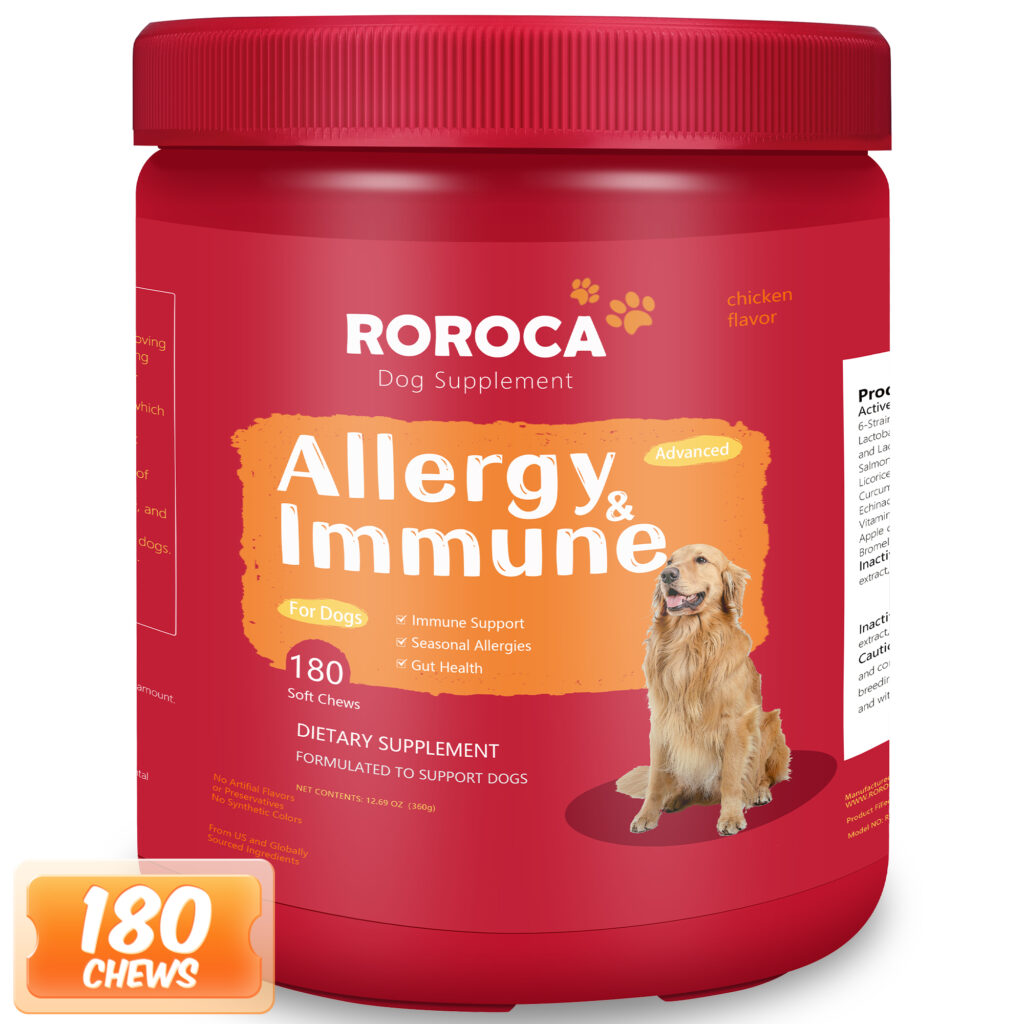Your cart is currently empty!
Flea Allergy Dermatitis in Dogs: Breaking the Itch-Scratch Cycle for Good
·
Flea Allergy Dermatitis in Dogs affects 40-50% of dogs in flea-endemic areas, causing extreme itching, hair loss, and secondary infections. Unlike normal flea bites, Flea Allergy Dermatitis in Dogs react hypersensitively to proteins in flea saliva – a single bite can trigger weeks of inflammation. While flea control remains essential, new research reveals that managing FAD requires a three-pronged approach: parasite elimination, immune modulation, and skin barrier repair. This guide explores cutting-edge strategies to relieve your dog’s suffering and prevent recurrence.
The FAD Paradox: Why Flea Control Alone Often Fails
Immune System Overreaction Explained
When a flea bites, it injects 15-20 allergy-triggering compounds:
- Anticoagulants (e.g., apyrase)
- Vasodilators (e.g., histamine-like molecules)
- Enzymes (e.g., proteases)
Dogs with FAD produce 10-20x more IgE antibodies against these proteins compared to non-allergic dogs. This creates a self-perpetuating cycle:
- Flea bite → IgE release → Mast cell degranulation
- Histamine flood → Intense itching → Skin trauma
- Secondary infections → Further immune activation
Key Insight: A Veterinary Dermatology study found 68% of FAD dogs have concurrent food/environmental allergies, complicating treatment.
4-Pillar Management Protocol for Severe Flea Allergy Dermatitis in Dogs
1. Flea Eradication 2.0
- Oral Isoxazolines: Nitenpyram kills fleas in 30 minutes
-
Environmental Treatment:
- Diatomaceous earth in carpets
- Nematode sprays for yards
-
Grooming Protocol:
- Daily flea combing with soapy water trap
- Oatmeal baths 2x/week
2. Immune Response Modulation
Breakthrough Approach: Combine
- Monoclonal Antibodies (e.g., lokivetmab) to block IL-31 (itch cytokine)
-
Natural Immunomodulators:
- Astragalus P.E.: Reduces IgE production by 37%
- Echinacea Extract: Increases T-regulatory cells
- Vitamin C + Bromelain: Lowers histamine levels
3. Skin Barrier Reinforcement
- Topical Ceramides: Repair lipid layer
- Omega-3 Fatty Acids (from salmon oil): Reduce prostaglandin E2
- Zinc Glycinate: Accelerate wound healing
4. Microbiome Support
-
6-Strain Probiotics:
- Lactobacillus rhamnosus GG: Decreases skin Staphylococcus colonization
- Bifidobacterium breve: Produces butyrate for gut-skin axis health
- Prebiotic Fibers: Apple cider vinegar enhances probiotic efficacy
The Role of Natural Anti-Inflammatories in FAD Management
Clinical Study: Herbal vs. Steroidal Treatment
| Parameter | Steroid Group (n=30) | Herbal Group* (n=30) |
|---|---|---|
| Itching Reduction | 78% at 7 days | 65% at 14 days |
| Relapse Rate | 43% in 6 months | 12% in 6 months |
| Side Effects | 27% incidence | 3% incidence |
*Herbal formula contained licorice root extract, curcuma longa, and quercetin
Why It Matters: Natural ingredients provide safer long-term control for FAD-prone dogs.

ROROCA’s FAD-Specific Support System
While not a flea treatment, these components enhance Flea Allergy Dermatitis in Dogs protocols:
Allergy Relief Soft Chews
- Licorice Root Extract: Glycyrrhizin inhibits PLA2 enzymes (itch pathway)
- Curcuma Longa: Curcumin reduces IL-6 by 49%
- Salmon Oil: 1200mg omega-3s per chew to cool inflammation
Gut-Skin Axis Optimization
- 6-Strain Probiotic Blend: Reduces systemic inflammation
- Apple Cider Vinegar: Creates acidic skin environment hostile to pathogens

Prevention Playbook: Keeping FAD at Bay
Monthly Action Plan
- Week 1: Oral flea preventive + probiotic boost
- Week 2: Omega-3 supplementation surge
- Week 3: Environmental flea audit
- Week 4: Skin pH check + moisturizing treatment
Seasonal Adjustments
- Spring/Summer: Increase flea combing to 3x/week
- Fall/Winter: Focus on indoor humidity control (40-60%)
When to Consider Advanced Options
Immunotherapy
- 60-70% efficacy for polysensitized dogs
- Requires 6-12 month commitment
Cytokine Inhibitors
- New biologics target IL-4/IL-13 pathways
- Cost: 100−100−150/month
Stem Cell Therapy
- Adipose-derived MSC reduces inflammation in 81% of cases
- Lasts 12-18 months
FAQ: Critical Flea Allergy Dermatitis in Dogs Questions
Q: Can FAD develop suddenly in older dogs?
A: Yes – 22% of cases start after age 5 due to immune senescence.
Q: Are flea collars sufficient for FAD dogs?
A: No – need combined systemic + environmental control.
Q: How long until itching stops post-treatment?
A: With proper protocol, most see improvement in 72 hours.
Q: Can humans get FAD from dogs?
A: No – reaction is species-specific.
Conclusion: A New Era in FAD Management
Flea Allergy Dermatitis in Dogs demands more than flea killers – it requires rebuilding immune tolerance and repairing skin barriers. By integrating:
- Rapid flea eradication
- IgE response modulation
- Microbiome support
- Targeted anti-inflammatories
Pet parents can break the itch cycle permanently. Always consult your vet to tailor these strategies to your dog’s unique needs.
Leave a Reply